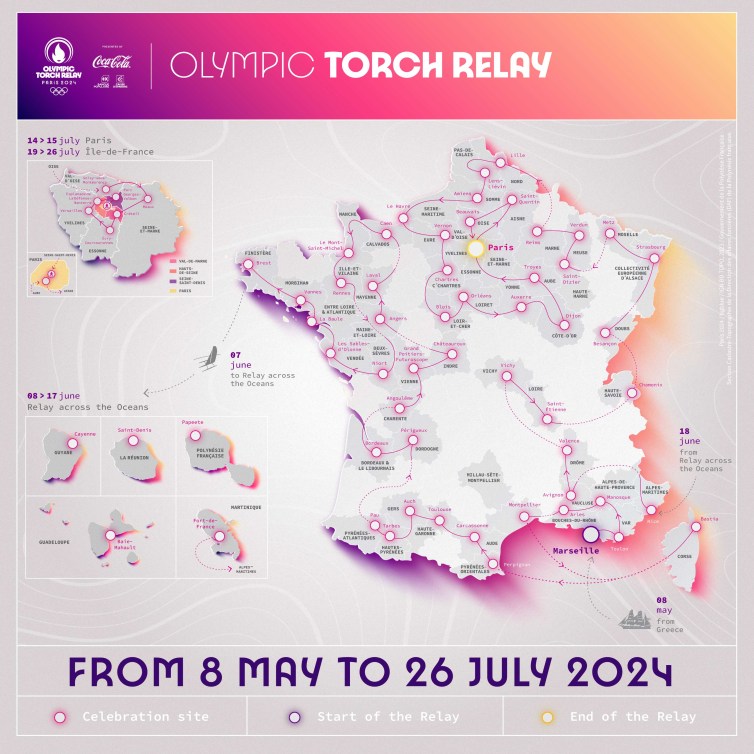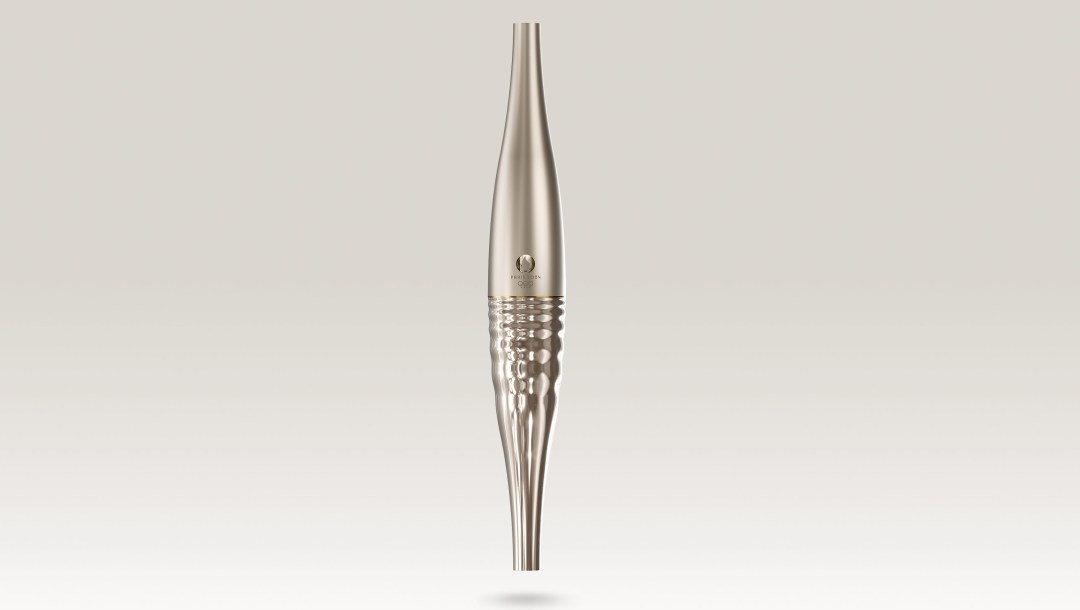Paris 2024 torch design revealed
The torch design for the upcoming Paris 2024 Olympic Games has been revealed. The torch, created by French designer Matthieu Lehanneur, will be carried by more than 10,000 torchbearers as the Olympic flame travels from Olympia, Greece to Paris.
Lehanneur had three main conceptual influences on his design: equality, water, and peacefulness. Each of these values or elements has significance to the Paris 2024 Games and are reflected in both the physical design of the torch and relay.
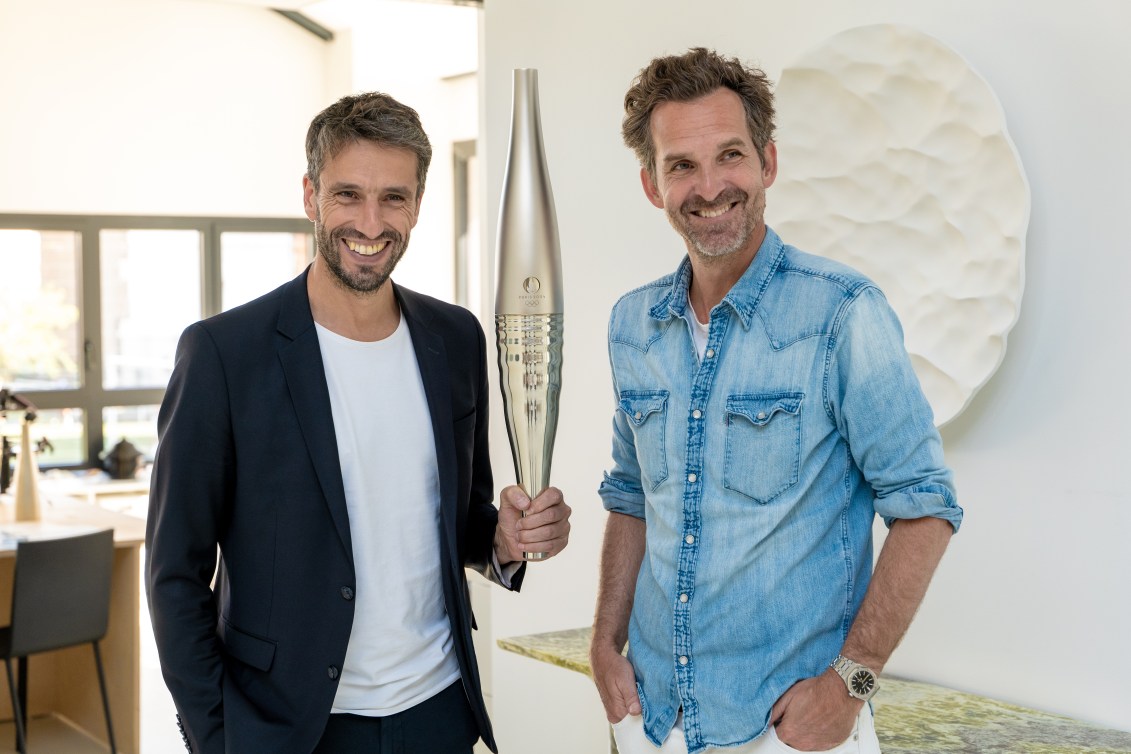
Signifying equality
From the outset, Paris 2024 made a commitment to invoking equal organizing energy towards the Olympic and Paralympic Games. Just as the emblem and mascots are the same for both Games, so too is the torch design. Paris 2024 will also be the first Olympic Games with complete gender parity – an equal number of men and women competing. This focus on equality is reflected in the torch design’s perfect symmetry, both horizontally and vertically.
Reflecting water
Water is a special element for Paris 2024. Not only will the Olympic flame arrive via the Mediterranean Sea, but it will also travel across the Atlantic, Pacific, and Indian Oceans in order to reach five overseas territories: Guadeloupe, French Guiana, Martinique, French Polynesia and Réunion.
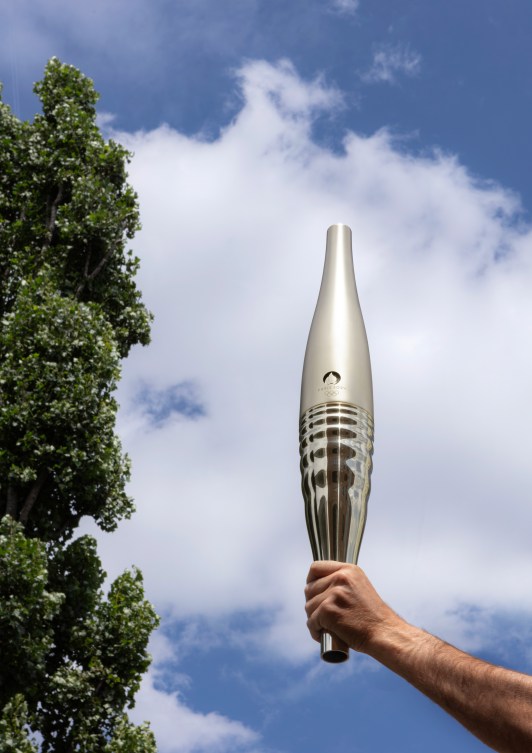
The River Seine is also a touchpoint for the Games as it winds through the capital city, passing by numerous Games venues, or serving as one itself. The Olympic Opening Ceremony will take place along the river, with athletes participating in a procession of boats.
Water is incorporated into the design inspiration for the torch as it reflects light to simulate the ripples and movements of water.
Protecting peace
Since the ancient Games, the Olympics have served as a symbol of peace, unity, and the coming together of nations. Lehanneur sought to reflect this sense of peacefulness in the gentle curves and rounded lines of the torch design.
About Lehanneur
Lehanneur is a multi-disciplinary designer whose work combines art, science, and design. His work is displayed in permanent collections at the Museum of Modern Art in New York City, the San Francisco Museum of Modern Art, the Centre Georges Pompidou in Paris, Les Arts Décoratifs in Paris and the Design Museum Gent.
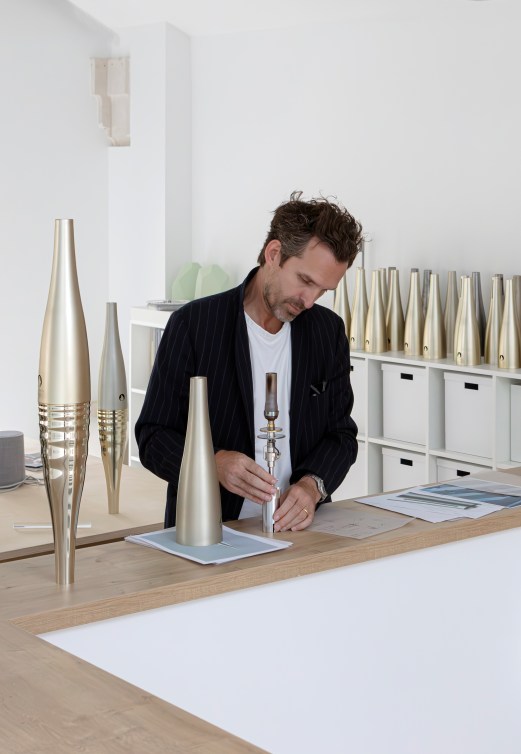
Lehanneur says that designing the Olympic torch is every designer’s dream, a once in a lifetime opportunity that is “an extraordinary encounter with history.”
“Ritualistic and magical in equal measure, the torch is a mythical object. A symbol of cohesion and sharing, it really does play a key role in the Games. It will travel thousands of kilometres, passed from person to person, on land and sea. For Paris 2024, and for the first time in its history, it plays on perfect symmetry, speaking to us more clearly about equality. I wanted it to be extremely pure, iconic, almost elemental. As simple as a hyphen and as fluid as a flame.” Lehanneur said of the design.
Production of the torch
The production of the torch will align with Paris 2024’s sustainability goals. To reduce the impact of production, only 2000 torches will be created (a number that is approximately five times fewer than previous Games).
The torch has a 3.5cm minimum diameter and 10cm maximum diameter and measures 70cm in length. Each torch weighs 1.5kg and will be made of recycled and renewable produced steel.
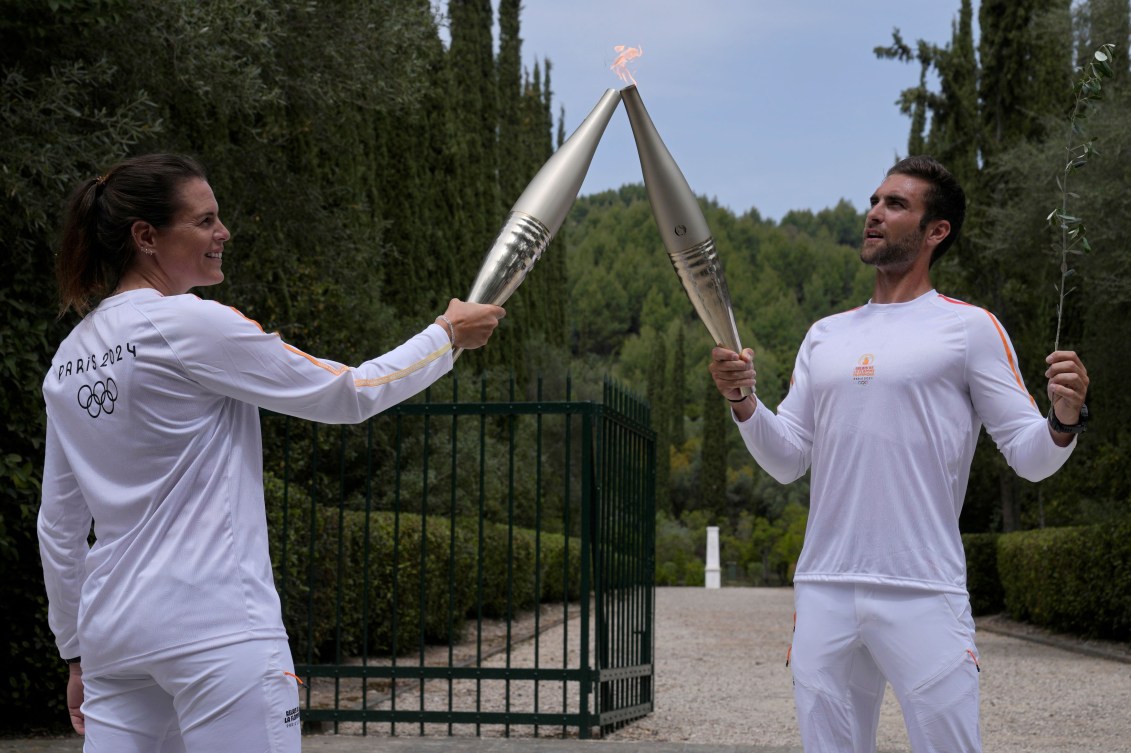
Paris 2024 Olympic torch relay
The Olympic flame was lit on April 16, 2024 in Olympia, Greece. It will travel across the Mediterranean Sea from the Port of Piraeus in Athens to Marseille, France aboard the three-masted historical ship, Belem, which was built the same year that the first modern Olympic Games were held in 1896 in Athens.
After its arrival in France on May 8, the Olympic flame will then make a 68-day journey across 65 French territories before arriving in Paris for the Opening Ceremony on July 26.
